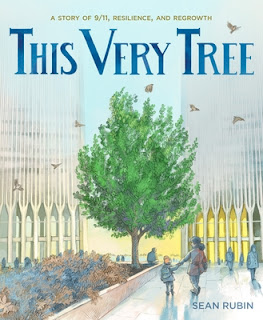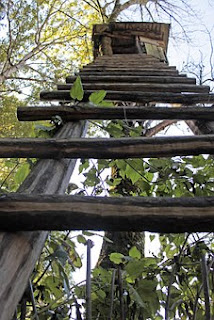I hope you had a nice Thanksgiving, and celebrated the day exactly as you wanted. Let the holidays begin!
Recently a friend and I were discussing the state of the business of writing. Publishing is a business, and a very dispiriting one. It’s external from the craft of writing, open to subjective opinions and the whims of trends. The dreadful truth is the odds are against us.
But, as once said by old friend long gone (and my own dear Dumbledore, Emma Dryden later reaffirmed, so we know it's true), writers write. Everything else -- everything external -- is beyond our control. However, writing is an internal process. As such, we focus on what we can control: ourselves. Take classes. Teach classes. Read books about the craft. Study mentor books. Adapt, rethink, refocus. Take chances. Leave your comfort zone. Write something new. Write something different. Submit, and submit again. Persevere.
To cite another idiom: We do our best and leave the rest to the universe.
Or, as Neil deGrasse Tyson offers much more eloquently -- and really, who else knows more about how the universe works than the mighty Tyson:
“The problem, often not discovered until late in life, is that when you look for things in life like love, meaning, motivation, it implies they are sitting behind a tree or under a rock. The most successful people in life recognize, that in life they create their own love, they manufacture their own meaning, they generate their own motivation.” -- Neil deGrasse Tyson
Recently I discussed one source of motivation. Considered “a master class in novel writing,” Story Engineering, by Larry Brooks (Writer’s Digest Books, 2011), takes a deep dive into story architecture. As Brooks offers, “…in their execution, stories are every bit as engineering driven as they are artistic in nature.” In other words, the technicality (or criticality) of the story is as fundamental as the creative. As Brooks stated,
“A story has many moods. It has good days and bad days. It must be nurtured and cared for lest it deteriorate. And it has a personality and an essence that defines how it is perceived. Just like human brings.”
Brooks is quick to admit that a writer can have all the right ingredients, perfectly stirred, and it turns out bland. Or, to put it another way, it’s possible to assemble in perfect order that perfect body. But without that creative spark, there is no life. Think Frankenstein’s monster.
So enthralled with his Story Engineering, I picked up another of his books, Story Fix: Transform Your Novel from Broken to Brilliant (Writers Digest Books, 2015). He begins his discussion with this powerful statement that encapsulates my recent discussion with my friend: “This is a book about the writer within.” The book is like a bootcamp for writers, no matter what stage in their career, focusing on the revision process. He states: “When we approach revision with the idea of creating something more enlightened and empowered, rather than just making the writing itself technically better, truly wonderful things can happen.”
According to Brooks, there are two essential realms of revision: the story idea, or concept; and the execution. The story idea should offer a dramatic premise, a thematic stage upon which characters reveal themselves. Revisions from this realm can be challenging because the writer must take a deep dive into the original premise. Too often, writers tweak the execution of the story, but ignore the raw material, the inherent nature of the story. He offers the example, “It’s like polishing a Volkswagen to prepare for a NASCAR race. Shiny isn’t the point.”
Likewise, the story’s concept may be compelling, but the narrative may be too slow, bogged down by too much backstory, or the characters are too one-dimensional. Maybe there’s not enough tension, or the pacing is off. Brooks identifies and examines twelve crucial elements that address these two revision realms. As one reviewer noted, the book isn’t just about revision, “it’s about resurrection.”
Turning my attention to the business of writing (because understanding how the business works helps to inform our strategies in surviving the challenges of the business), I read Law and Authors: A Legal Handbook for Writers, written by literary agent and lawyer, Jacqueline Lipton (University of California Press, 2020). This is an extremely reader-friendly book that decodes complex concepts such as copyright laws, the difference between copyright and trademark, the difference between public domain and Creative Commons, how much is Fair Use, and the difference between self-publishing, independent and hybrid authors. She takes a deep dive into contracts, both agent and publisher. Targeting the agent agreement, she highlights several questions the author needs to ask potential agents, such as if the agency contract is a book-by-book contract, or will it cover multiple projects (i.e. career building). Will the agent continue to represent you if they don’t sell your first book? How can you tell a good agent from a bad agent, and what happens if something goes wrong?
She addresses the many, many minefields often found in a publisher’s contract, discussing the specific rights a writer is selling or licensing. And, of course, she explains royalties on a level that even an lumpish loggerhead like myself can understand. Sorta. My takeaway: negotiating a contract is not for the faint-hearted.
Indeed, the odds of getting published are low. Some say 1000 to 1. Others say it’s less than 1%. Or, as Harold Underdown offers in his still-relevant 2010 article, the odds stink.
But in the end, does it matter? Yes, somewhat. Be aware, but don’t let it define you. In the end, the odds don’t matter. Because, as Harold explains, “Any editor can tell stories about times when they opened a submission and read a manuscript that they just couldn't put down and knew right away that they had to acquire. This may have been a manuscript that had been seen by dozens of editors, or they may have been the first one. That didn't matter.”
Writers write.
Find your jam and go with it, and leave the rest to the universe.
-- Bobbi Miller
Writers Write clipart from Clipart Library.























































